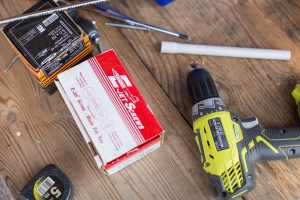Hybrid Aerodynamics: Morphing Body Panels
The automotive industry is constantly evolving and manufacturers are always looking for new ways to improve the performance of their vehicles. One area that has been gaining a lot of attention in recent years is aerodynamics. In order to maximize fuel efficiency and reduce emissions, carmakers have been implementing various aerodynamic techniques in their designs. One of the latest and most innovative approaches to aerodynamics is the use of hybrid aerodynamics with morphing body panels. This cutting-edge technology allows cars to adapt to changing conditions, creating a more efficient and dynamic driving experience. In this article, we will explore the concept of hybrid aerodynamics and how the integration of morphing body panels is revolutionizing the automotive industry.
The Basics of Hybrid Aerodynamics
Before we dive into the specifics of morphing body panels, let’s first understand the fundamentals of hybrid aerodynamics. In simple terms, hybrid aerodynamics is the combination of both active and passive aerodynamic systems. Active aerodynamics refers to the use of mechanical or electronic components to manipulate airflow around a vehicle. On the other hand, passive aerodynamics relies on the design and shape of the car itself to optimize airflow. Hybrid aerodynamics brings these two approaches together, allowing for a more precise and efficient control of the vehicle’s aerodynamic performance.
The Benefits of Hybrid Aerodynamics
There are several benefits to using hybrid aerodynamics in cars. Firstly, it allows for better control and adjustment of airflow, which can improve overall aerodynamic efficiency and reduce drag. This, in turn, leads to better fuel economy and performance. Secondly, the combination of active and passive systems can provide a more dynamic driving experience, with the car adapting to different road and weather conditions. Lastly, hybrid aerodynamics gives designers more flexibility in terms of design, as they are not limited to relying solely on passive aerodynamic elements.
Morphing Body Panels: A Game-Changer in Hybrid Aerodynamics
One of the key components of hybrid aerodynamic systems is the use of morphing body panels. These are panels that can change shape or position to optimize airflow based on different driving conditions. This technology has been inspired by nature, specifically the concept of biomimicry, where engineers look to nature for innovative solutions to technological challenges.
How Morphing Body Panels Work
Morphing body panels use a combination of mechanical and electronic systems to change their shape. For example, using actuators, the panels can be adjusted to alter their inclination, angle, or curvature. The control system is usually computerized, using inputs such as speed, temperature, or sensor data to make adjustments in real-time. This allows for a seamless integration of active and passive aerodynamics, resulting in a more efficient and responsive vehicle.
The Benefits of Morphing Body Panels
The biggest advantage of using morphing body panels is their ability to adapt to different driving conditions. For example, during highway driving, the panels can be adjusted to reduce drag and improve fuel efficiency. On twisty roads, the panels can tilt to generate downforce, providing better handling and stability. This not only improves the performance of the car but also enhances safety for the driver and passengers. Additionally, the use of fewer traditional aerodynamic elements, such as spoilers and fins, can result in a more streamlined and aesthetically pleasing design.
The Future of Hybrid Aerodynamics with Morphing Body Panels
The integration of morphing body panels in hybrid aerodynamics is still in its early stages, but the potential for growth and development is vast. As automakers continue to push the boundaries of technology, we can expect to see more advanced and sophisticated applications of this concept. In the future, we may see cars with body panels that can not only change their shape but also their material properties, further improving aerodynamic performance. Additionally, with the rise of electric vehicles, the use of hybrid aerodynamics will become even more crucial in maximizing battery range and efficiency.
In Conclusion
Hybrid aerodynamics with morphing body panels is a game-changer for the automotive industry. This technology not only improves the overall performance and efficiency of cars but also provides a more dynamic and safer driving experience. As we move towards a greener future, these innovative solutions will play a significant role in reducing carbon emissions and making driving more sustainable. It is an exciting time for the automotive industry, and we can’t wait to see what the future holds for hybrid aerodynamics and morphing body panels.





